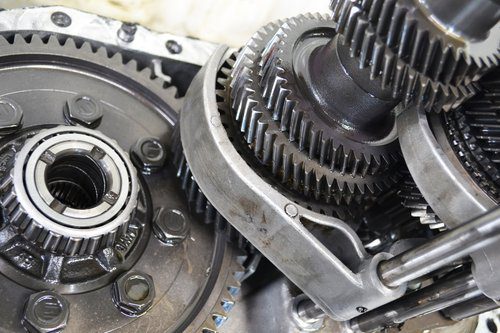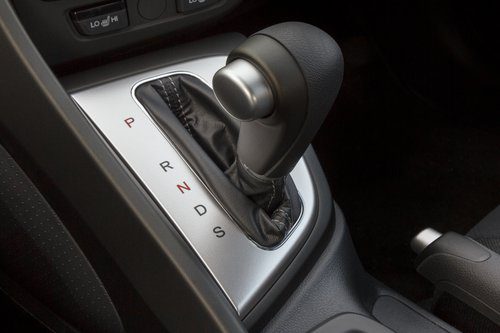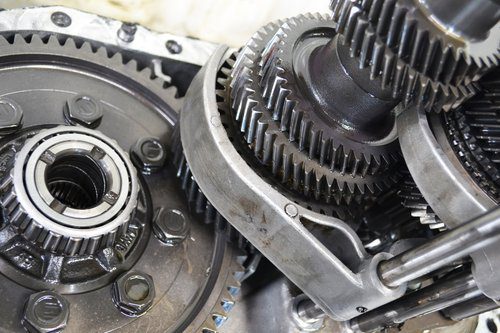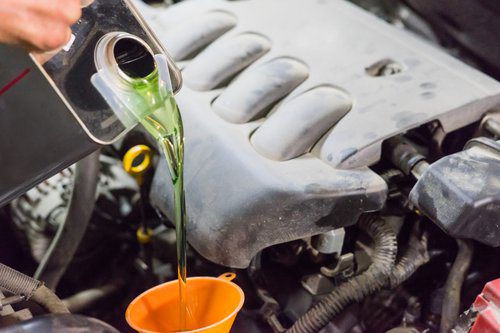
Gearbox: service life, functions and price
Content
- 🚗 What is my transmission used for?
- 🔧 How does the transmission work?
- 👨🔧 How do I service the transmission?
- ???? What is the difference between a manual transmission and an automatic transmission?
- 🗓️ How long is the transmission life?
- 🚘 Why change the gearbox oil?
- ???? How much does a gearbox oil change cost?
The gearbox transfers power from the engine to the wheels and synchronizes their rotation through the clutch. The transmission can be mechanical, automatic or sequential. If it is automatic, the transmission oil must be changed every 60 kilometers.
🚗 What is my transmission used for?

The gearbox is part of your vehicle's transmission system, which consists of three elements:
- La Transmission ;
- Le differential ;
- Theclutch.
Your transmission plays an important role in helping the engine by taking some of the work off of it. Indeed, it transfers the energy of the engine to the axle thanks to gears and gearboxes.
Thus, it is the gearbox transfers engine power to the wheels... For this, a system of gears is used, each of which has a different size. They use the accumulated momentum and power from the engine to spin the wheels faster. Thus, the effort required by the engine to move the vehicle is not so important.
Gearboxes are of different types:
- Transmission Manual ;
- Transmission Automatic which there are several types;
- Transmission consistent.
The gearbox contains oil to lubricate all moving parts. On automatic transmissions, this oil should be changed approximately every 60 kilometers or your transmission may break.
🔧 How does the transmission work?

Thanks to different Sprockets with different sizes, the gearbox uses the power of the engine and the momentum accumulated by the rotation at its output to make the wheels turn more or less quickly. The gearbox is a power multiplier, only the engine cannot exceed approximately 40 km/h.
Thus, the gearbox allows gears to be changed so that it spins more slowly and does not run out. But if, on the contrary, turns too slowly, the car runs the risk of stalling. Thus, downshifting or downshifting allows the engine to run slightly faster.
The gearbox thus allows the rotation of the engine and the wheels to be coordinated. Chronologically, its action is as follows:
- Rotation crankshaft is transmitted flywheel then to the clutch, before reaching the gearbox through the gear (at the input of the gearbox);
- The input shaft drives certain gears at each speed (they are integral with the shaft);
- Rotation transfers to intermediate gears located on the output shaft;
- During gear shifting, the synchronizer moves on the corresponding gear, thus making it integral with the output shaft, which then begins to rotate;
- The output shaft transfers its movement to the differential, and then, finally, at the end of the stroke to the wheels.
🇧🇷 How do I service my transmission?

The maintenance of your transmission depends on the type of transmission in your vehicle. A manual transmission usually has no maintenance intervals, except in special cases. On the other hand, automatic transmissions need to be serviced according to your manufacturer's recommendations.
The best way to save your gearbox is to change it in time. The gearbox oil usually needs to be changed. every 60 kilometers, but you will find the intervals specific to your vehicle in the service booklet.
Please note that on the most recent vehicles, a reminder appears in the dashboard so that you do not miss a service deadline.
To extend the life of the gearbox and avoid premature replacement. To do this, consider in addition to regular oil changes, to change gears smoothly, effortlessly and with enough pressure on the clutch pedal. These simple reflexes are valuable ways to extend the life of your box.
?? What is the difference between a manual transmission and an automatic transmission?

A manual transmission requires the driver to change gears himself. Typically, it has 5 or 6 gears, as well as a reverse gear. To change gears, the driver must press a button clutch pedal, which allows the components of the clutch to be separated.
Then he manipulates Transmission to change to a higher or lower gear. A particular advantage of a manual transmission is that it is cheaper than an automatic transmission. It also saves fuel.
An automatic transmission, known to be more comfortable and certainly simpler, requires less effort on the part of the driver. After all, the gears are shifted alone, but there are no clutch pedals in the car. Thus, the automatic transmission has fewer gears, especially with park position, drive position for forward and reverse gear.
Finally, you should be aware that the oil used is not the same and that the frequency of oil changes is different. In automatic transmissions, the oil is changed periodically, approximately every 60 kilometers, but it is best to follow the manufacturer's recommendations.
🗓️ How long is the transmission life?

The gearbox is one of the most durable parts of a car. By being respectful to the mechanics and changing the oil when necessary, you are at least giving yourself a chance to save your transmission. 300 000 km.
🚘 Why change the gearbox oil?

La empty your gearbox very important if you want to keep it in good condition. This is why it is important to do this in accordance with the recommendations of your manufacturer, which, in particular, are indicated in your vehicle's maintenance log.
But why change the oil? The different gears of the gearbox are constantly activated in order for the gearbox to play its part. To prevent their wear and overheating, all these parts are lubricated with oil, which is located in the gearbox housing.
Replacing this oil is necessary to prevent it from escaping and also to prevent the transmission from being lubricated with used oil. But be careful: don't confuse gearbox oil change with engine oil change! They have nothing to do with it.
?? How much does a gearbox oil change cost?

The price of an oil change will vary depending on your transmission type (automatic or manual). In fact, for manual transmissions, the emptying costs are between 40 and 80 €... On average, the price of an oil change is 70 €. The difference in price is due to the labor required to change the oil on different car models.
Indeed, the location of the gearbox can be more or less accessible depending on the car model. For automatic transmissions, the price is higher than for manual ones, because the intervention is more difficult. Thus, the cost of emptying can be reduced. up to 120 €.
Now you know everything about your car's gearbox! As you already understood, it is important to drain it to keep your gearbox in good condition. The oil also changes when the clutch is replaced.